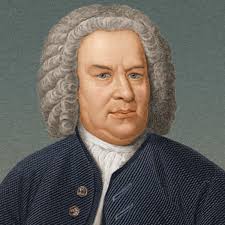Johann Nauwach (1595–1630) was an early seventeenth-century German lutenist who was sent to Florence to study with Medici court lutenist, Lorenzo Allegri (1567–1648). Nauwach returned to Dresden around 1618 and published two volumes of songs. His first, Libro primo di arie passegiate a una voce per cantar (1623), contains monodic settings of popular Italian eclogues into which he composed extensive diminutions similar in style to Caccini. In 1627, Nauwach published Teütscher Villanellen dedicated to the nuptial celebrations of Sophie Eleonore of Saxony and Landgrave Georg II of Hesse-Darmstadt –– the same celebration for which Heinrich Schütz (1585–1672) and Martin Opitz (1597–1639) collaborated on a grand adaptation of Rinuccini’s popular Daphne. Nauwach’s Teütscher Villanellen is generally considered to be the first published volume of German continuo songs.
This dissertation provides a critical performance edition of Teütscher Villanellen. It includes settings of all the poetry verses provided in the original edition by Nauwach, translations of the poetry, translations of the dedication and dedicatory poem, and editorial notes. In addition to these, commentary is provided to aid performance practice. This commentary falls into two main areas. First is an examination of the background and meaning of the poetry found in the volume of which roughly half are attributable to Martin Opitz. The discussion contextualizes the pastoral poetry, provides background on the Opitz, discusses its various topoi and allusions found in the poetry, and explores word and verse stress showing their relation to Teütscher Villanellen. The second area of commentary focuses on four major performance treatises contemporary to Teütscher Villanellen. These include chapter nine of Michael Praetorius’s Syntagma Musicum III (1614-1619), Johann Andreas Herbst’s Musica Practica (1642), George Falck’s Idea Boni Cantoris (1688) and Christoph Bernhard’s Von der Singe- Kunst oder Manier (1649). The discussion compares and classifies various ornaments from the treatises and suggests historically-informed performance practice for Nauwach’s volume. It concludes by demonstrating ways in which ornamental gestures termed affetti can be logically combined in order to create longer ornamental structures. Also included is a comparison between Nauwach’s first Italian volume with Teütscher Villanellen which analyzes both Nauwach’s compositional tendencies and his idiosyncratic use of ornamentation.
 In September 2019, Christopher teamed up with baritone Hugh Russell and soprano Celena Shafer to help Maestro Carl St. Clair celebrate 30 seasons with the Pacific Symphony. Together, they collaborated on spectacular performances of Carmina Burana at the opulent Segerstrom Concert Hall in Costa Mesa. In October, Chris performs Bach BWV 189 at the Idaho Bach Festival of which he is co-director. Please
In September 2019, Christopher teamed up with baritone Hugh Russell and soprano Celena Shafer to help Maestro Carl St. Clair celebrate 30 seasons with the Pacific Symphony. Together, they collaborated on spectacular performances of Carmina Burana at the opulent Segerstrom Concert Hall in Costa Mesa. In October, Chris performs Bach BWV 189 at the Idaho Bach Festival of which he is co-director. Please